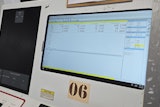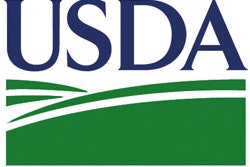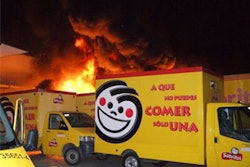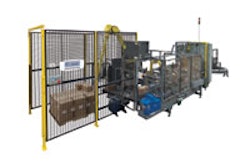Preventing combustible dust explosions in food processing plants is a topic of widespread concern, and dust collectors are often at risk. This article describes the agencies that set and enforce standards and codes, and provides general guidelines on applying the right standards to protect against combustible dust explosions.
Agencies Involved
There are three key entities involved in combustible dust issues:
National Fire Protection Association (NFPA): The NFPA sets safety standards, amending and updating them on a regular basis. When it comes to combustible dust, there are several documents that come into play. Together these standards add up to total protection to prevent an explosion, vent it safely, and/or ensure that it will not travel back inside a building.
Most insurance agencies and local fire codes state that NFPA standards shall be followed as code. Exceptions would be where the authority having jurisdiction (AHJ), such as Factory Mutual, specifies an alternative safety approach which might be even more stringent.
OSHA: It is OSHA’s role, together with local authorities, to enforce the standards published by NFPA. In the aftermath of the Imperial Sugar Company explosion in 2008, which killed 13 workers and injured 42 others, OSHA re-issued its 2007 Combustible Dust National Emphasis Program (NEP) outlining policies and procedures for inspecting workplaces that create or handle combustible dusts and ramping up inspections in industries with more frequent and serious incidents. A variety of dusts generated in food processing are potentially explosive — among them sugar, flours, corn starch and other starches.
It should be noted that explosions in grain bins used to be one of the biggest safety problems in the U.S. In 1987, following a series of deadly explosions, OSHA promulgated a Grain Handling Facilities Standard that remains in effect today. This standard has yielded major improvements in combustible dust safety in these facilities. According to OSHA, “The lessons learned in the grain industry can be applied to other industries producing, generating, or using combustible dust.”
U.S. Chemical Safety Board (CSB): The CSB is an independent federal agency responsible for investigating industrial chemical accidents. The CSB conducts thorough investigations of explosions, sifting through evidence to determine root causes and then publishing findings and recommendations.
The CSB has become an outspoken advocate of the need for more stringent combustible dust regulations and enforcement. On February 7, 2012, the fourth anniversary of the Imperial Sugar explosion, the chairman of the CSB issued a statement in which he applauded the progress made to date in dealing with combustible dust issues. He noted, however: “Completing a comprehensive OSHA dust standard is the major piece of unfinished business from the Imperial Sugar tragedy…. We believe such a standard is necessary to reduce or eliminate hazards from fires and explosions from a wide variety of combustible powders and dust.”
Relevant NFPA Standards
In trying to sort through the many combustible dust standards, a good starting point for food manufacturing professionals is NFPA 654 the Standard for the Prevention of Fire and Dust Explosions from the Manufacturing, Processing and Handling of Combustible Particulate Solids. NFPA 654 is an all-encompassing standard on how to design a safe dust collection system. It is regarded as the guiding dust document and the most general on the topic, and it will lead you to other relevant documents.
Depending on the nature and severity of the hazard, NFPA 654 will guide you to the appropriate standard(s) for explosion venting and/or explosion prevention, NFPA 68 and 69:
NFPA 68 — Standard on Explosion Protection by Deflagration Venting: This document focuses on explosion venting — i.e., on devices and systems that vent combustion gases and pressures resulting from a deflagration within an enclosure — for the purpose of minimizing structural and mechanical damage. The current edition, published in 2007, contains much more stringent requirements than past editions, essentially elevating it from a guideline to a standard.
NFPA 69 — Standard on Explosion Prevention Systems: This standard covers explosion protection of dust collectors when venting is not possible. It covers the following methods for prevention of deflagration explosions: control of oxidant concentration, control of combustible concentration, explosion suppression, deflagration pressure containment, and spark extinguishing systems.
Also of importance is an industry-specific standard: NFPA 61 — Standard for the Prevention of Fires and Dust Explosions in Agricultural and Food Processing Facilities. This covers facilities engaged in dry agricultural bulk materials including grains, oilseeds, agricultural seeds, legumes, sugar, flour, spices, feeds, and other related materials; facilities that manufacture and handle starch; seed preparation and meal-handling systems of oilseed processing plants not covered by NFPA 36, Standard for Solvent Extraction Plants.
Using Performance-Based Codes: Since the mid-1990s, the NFPA has been incorporating performance-based options into its updated standards.
The NFPA uses relatively conservative textbook calculations in its standards for explosion protection equipment, and justifiably so. However, using performance-based codes, the NFPA also allows real-world destructive test data to be used in place of its own standard calculations, provided the dust collection supplier can provide adequate data to prove that the collection system is designed to meet a specific set of criteria for a given situation.
The use of real-world destructive test data is thus a permissible and sometimes overlooked approach. Find out if your dust collection supplier can provide real-world data to assist in a strategy that may help you to avoid over-engineering and save on equipment costs without compromising safety.
Tony Supine is plant manager and Mike Walter is a senior engineer with Camfil Farr Air Pollution Control (APC). Camfil Farr APC is a leading manufacturer of dust collection equipment and part of Camfil Farr, the largest air filter manufacturer in the world. The authors can be reached at (800) 479-6801 or (870)933-8048; email [email protected]; website https://camfilapc.com/.























